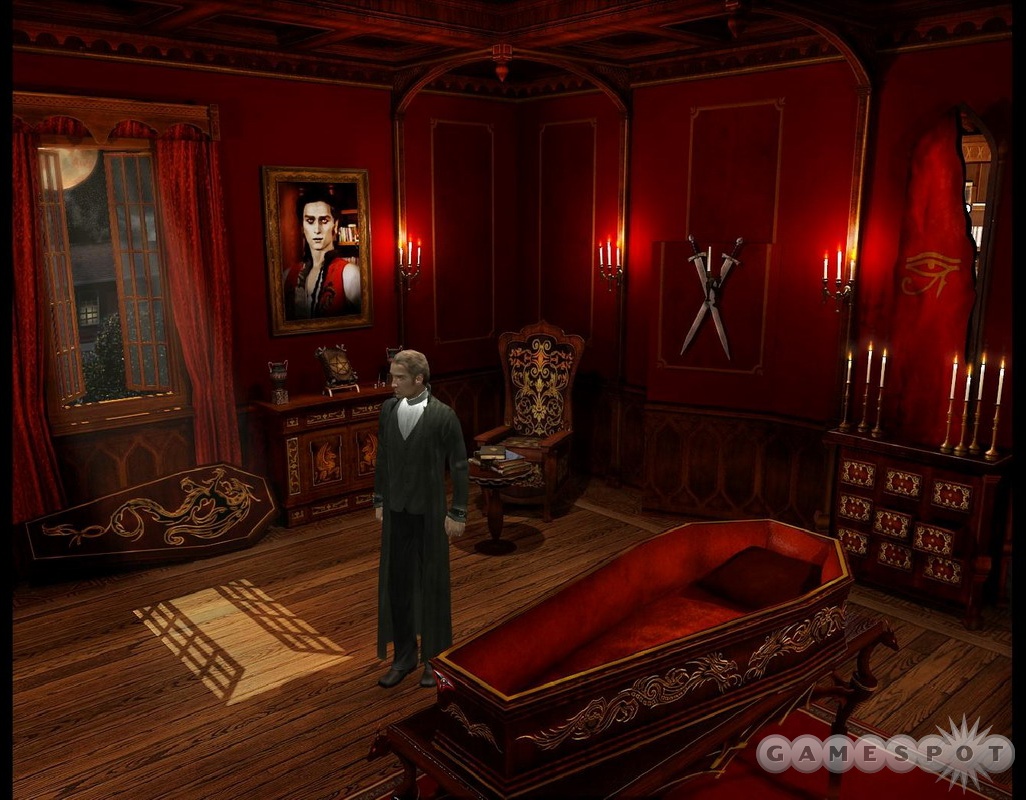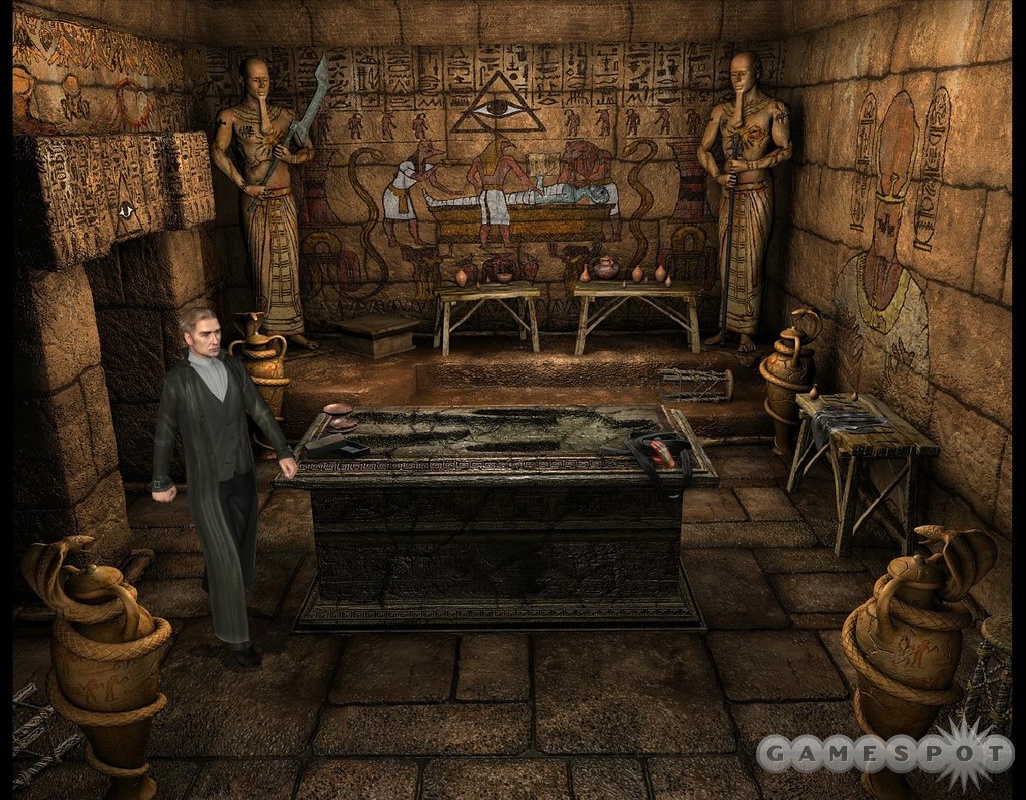Good storytelling never goes out of style. For proof, check out Dracula: Origin, a point-and-click reimagination of Bram Stoker's classic novel from Frogwares that delivers a gothic tale as atmospheric and chilling as a London fog. While you couldn't ask for a more done-to-death story, the treatment of this legendary material is both respectful and innovative, with familiar characters and scenes being mixed in with all-new escapades set across Europe and the Middle East. Too many pixel hunts and logic puzzles that occasionally stray into "good luck solving this without a walkthrough" territory cause a few problems, although these frustrations aren't enough to ruin a great Victorian spook story.

Dracula: Origin keeps the bare bones of the Stoker novel, but adds to it by branching out in a few places and changing the focus from drawing-room horror to something of a detective story. Vamp hunter Van Helsing moves to center stage from his supporting role in the novel, as the dour professor turns sleuth and ventures to London, Cairo, Vienna, and, of course, Transylvania on a one-man quest to save poor Mina Murray and stop Dracula's plans to resurrect the dead. The story unfolds like a mash-up of Stoker's Dracula, any number of Sherlock Holmes short stories, and the less weird tales of HP Lovecraft's Cthulhu Mythos, with you playing vampire hunter, gumshoe, and intrepid researcher.
The script doesn't borrow much from Stoker, although it is excellent in its own right as a modern take on the old Victorian penny dreadfuls that influenced Dracula. Voice acting is generally impressive, as long as you've got a taste for melodrama. Van Helsing in particular gets awfully worked up over the slightest little thing, becoming so uptight over such minor annoyances as running into a locked door that you'll frequently think that Dracula himself has just jumped out of the shadows.
Counterbalancing this fresh story is gameplay that feels like something out of a point-and-click adventure made 20 years ago. As Van Helsing, you stroll from one scene to another, carefully scanning the surroundings for anything that can be pocketed and later used to construct some sort of contraption necessary for opening a door or unlocking a safe, for example. You gather and hoard all sorts of items, such as meat hooks, mummy wrappings, and even a jar of flies. There generally isn't any rhyme or reason to all of this scrap collecting, other than that you know you're playing an adventure game, so you're going to need this junk at some point down the road. Van Helsing's entire philosophy of vampire hunting is expressed in one line he repeats over and over: "This might be useful. I'm taking it."
Pixel hunting is another issue. Most of the screens are shrouded in gloom as well as cluttered with furniture and other background details, making it nearly impossible to pick out all of the many objects that you need to collect without using the spacebar command to highlight them. Some of the tinier items in the game are all but hidden in the scenery, which speaks well for the wonderfully detailed backdrops like the Egyptian tomb and Dracula's castle in Transylvania, but not for the game's playability. So you're left with the spacebar, and that seems like a cheat as it pretty much spotlights exactly what you have to do in every location. Still, it's absolutely necessary unless you want to tediously scroll over every single pixel in every single scene.

A few of the set-piece logic puzzles are geared to cause similar frustration. Dracula: Origin is loaded with braintwisters that range from obvious to maddeningly obtuse. Lack of proper instructions is a big problem with many of them, as you're occasionally plopped in front of a plaque, a checkerboard, or even a chemistry litmus test without any guidance as to what exactly you're supposed to be doing. All you can do much of the time is blindly experiment with whatever you can move in the puzzle in an attempt to figure out what it might be all about, and then take a crack at actually solving it. Yet even though it seems like the puzzles would be better off if they came with FAQs, their inventive design and sheer deviousness outweighs any irritation you might have over the lack of instructions. Many could have served as the linchpins for a Sherlock Holmes mystery, and all are perfectly suited to a quest about slaying a vampire. You move a pentagram to reveal eerie Latin writing, decipher Egyptian hieroglyphs on a cursed tomb, and examine medieval carvings of demons and sinners to open up a crypt. All could certainly be a little more intuitive, but they couldn't be any more imaginative, or more appropriate for this storyline.
Creepy atmosphere and an imaginative take on a familiar tale elevate Dracula: Origin above its shortcomings. A freer interpretation of the now decrepit point-and-click formula would have been much appreciated, but this is still a very enjoyable, if deeply traditional, adventure.